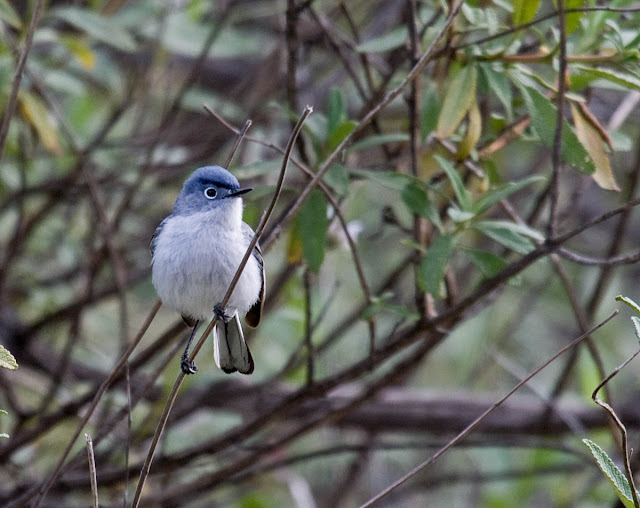There are three species of gnatcatchers in San Diego County. Besides having different songs, calls, and habitat preferences, they all differ in the amount of white on the underside of the black tail. The dusky-breasted California Gnatcatcher has a nearly all-black tail. It is an endangered species of the coastal sage scrub--found in the lowland hills where residential development is most intense. The gray-and-white Black-tailed Gnatcatcher has a bit of white in the tail, but is over half black. It is found only in the desert lands east of the mountains. [See my post on identifying gnatcatchers in southern California.]
Blue-gray Gnatcatchers are found in the most diverse habitats--riparian bottoms, pinyon-juniper, chaparral, and live oak woods.
 |
| Blue-gray Gnatcatcher. Dixon Lake, Escondido, California. April 15, 2016. Greg Gillson. |
I heard this bird and its mate as I was driving slowly along the pot-holed road on the north shore of Dixon Lake, Escondido. I made a slight hiss with my tongue and the male popped up to investigate. I was able to shoot my photos from the car, using it as a blind. Remember to shut off the engine to remove vibrations that affect image quality. These ended up being my best photographs of this bird that always seems to peek out from behind a tangles of branches.


No comments:
Post a Comment
I really want to hear from you! I've changed settings (again) in order to try to make commenting easier without opening it up to spammers. Please note, however, that comments to posts older than 14 days will be moderated. Thank you.